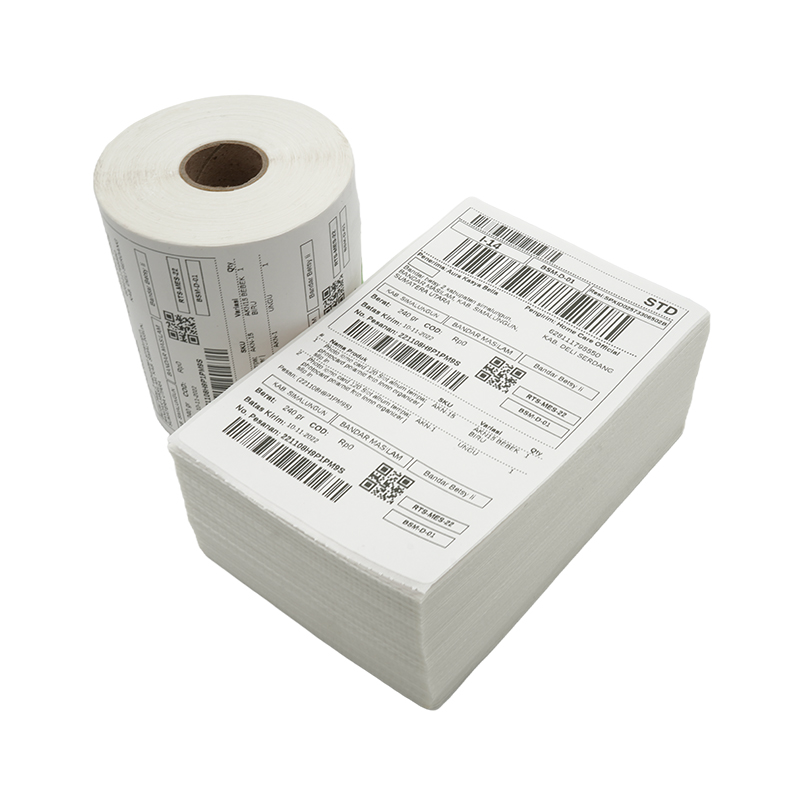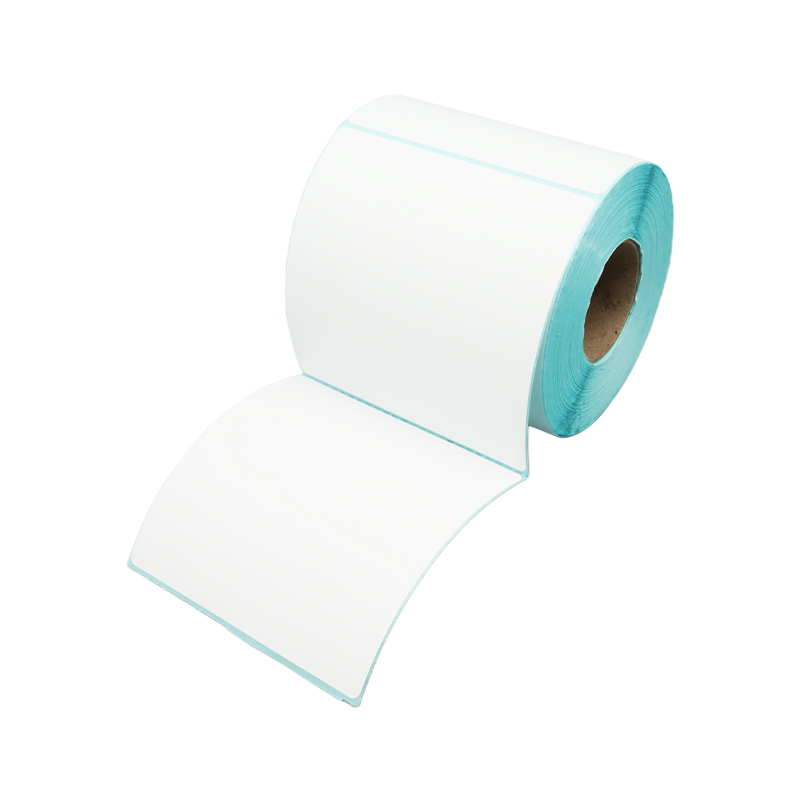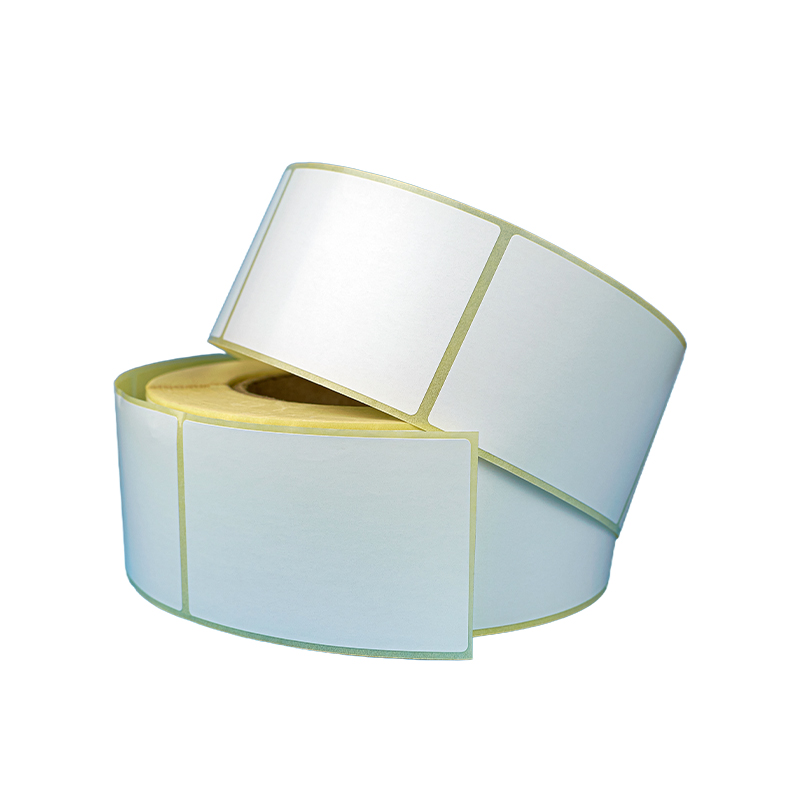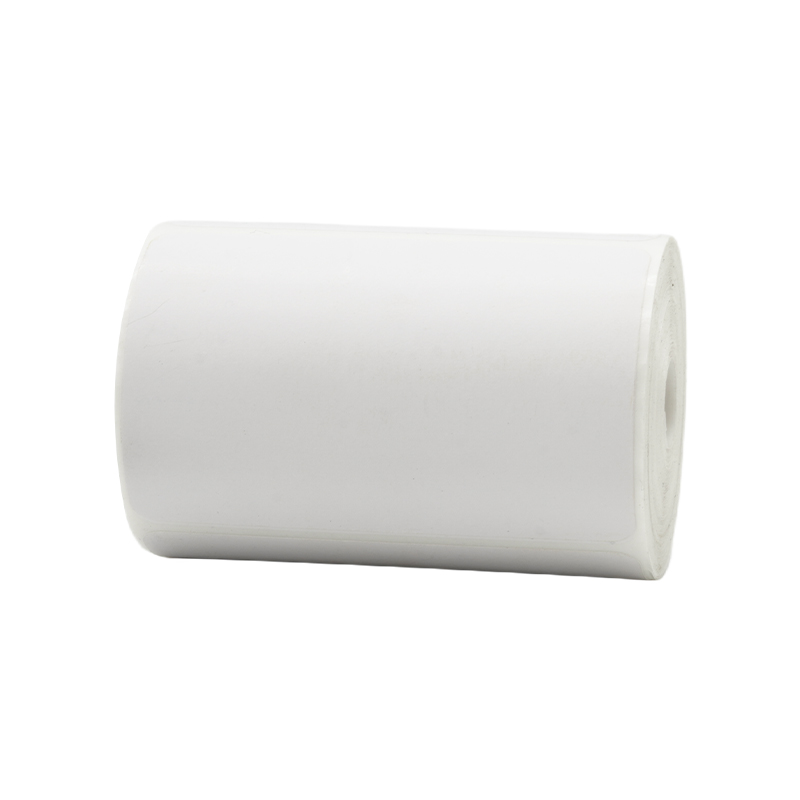How does blue grid thermal tag paper improve information entry efficiency through color and layout?
Release Time : 2025-10-03
In applications requiring frequent information recording, such as warehousing and logistics, production management, medical records, and laboratory testing, label paper is not only a data carrier but also a key tool for improving work efficiency and accuracy. In recent years, "blue grid thermal tag paper," a product that combines functionality with visual guidance, has gradually become an industry favorite. Through its scientific color design and precise grid layout, it cleverly addresses the errors, misalignment, and inefficiency inherent in traditional blank or single-line labels during information entry, achieving standardized, visual, and efficient information recording.
1. Blue Background: The Advantage of High-Contrast Visual Guidance
Traditional thermal labels typically feature a white or light-colored background, with information printed or handwritten in black. However, the stark contrast between black text and a white background can easily cause visual fatigue during long hours or in complex lighting conditions. Furthermore, the lack of positioning aids can lead to skewed text and misplaced content. Blue grid thermal tag paper uses a light blue or sky blue background, creating a soft and clear contrast with the black or dark gray text produced by thermal printing or handwriting. This "black text on a blue background" combination not only reduces visual stimulation and reduces operator fatigue, but more importantly, blue, as a cool color, psychologically evokes calmness and focus, helping to enhance concentration during data entry. Furthermore, in color science, blue is closely associated with concepts such as "information," "technology," and "professionalism," and is often used in mapping, spreadsheets, and management systems. Its application to label paper invisibly reinforces its professional attributes as a data recording tool and enhances user awareness of standardized operation.
2. Grid Layout: Precise Positioning and Standardized Writing
The core feature of blue grid thermal tag paper lies in its evenly distributed fine-line grid. These grids are typically printed at a standard pitch of 5mm x 5mm or 10mm x 10mm, creating a structure similar to graph paper. This layout provides an intuitive "visual ruler" for data entry, significantly improving standardization and efficiency. Firstly, the grid lines help operators quickly align text and numbers, avoiding uneven, tilted, and misaligned handwriting. This ensures a neat and aesthetically pleasing label, making it easier to scan and archive. Secondly, when multiple fields need to be filled out, the grid serves as a natural reference for column division, helping users allocate space optimally and preventing overlapping or missing information. For example, when recording sample numbers in the laboratory, each cell can correspond to a single digit, significantly reducing transcription errors. Furthermore, the grid structure is particularly advantageous for the coordinated layout of barcodes, QR codes, and handwritten information. Operators can use the grid to precisely delineate printed and handwritten areas, ensuring that barcodes are not obstructed and information is uniformly positioned, thereby improving the read success rate of automated identification systems.
3. Thermal Technology: Instant Development, Efficient Processing
Blue Grid Thermal Tag Paper offers visual advantages while inheriting the core characteristics of thermal paper: it requires no ribbon or ink and develops rapidly through heat from a thermal printer. This feature makes it extremely efficient in scenarios requiring rapid production and high-frequency printing. Combined with the guiding role of the blue grid, printed content and handwritten supplementary information can be seamlessly integrated, achieving an efficient workflow with "one-shot, complete information."
4. Improved Efficiency in Application Scenarios
In practical applications, the value of Blue Grid Thermal Tag Paper is particularly evident. For example, during warehouse picking, operators need to add batch numbers or special notes to labels. The grid helps them quickly locate the writing area and avoid accidentally writing on the barcode area. In medical settings, nurses use these labels to record infusion times and dosages. The blue background and grid lines significantly reduce the risk of recording errors in emergency situations. During quality inspection on the production line, inspectors check or fill in data item by item according to the grid, ensuring complete and traceable processes.
The success of blue grid thermal tag paper lies not in disruptive technology but in deep understanding of user pain points and detailed optimization. It integrates color psychology, ergonomics, and practical functionality, using blue to guide the eye, the grid to regulate behavior, and thermal sensitivity to increase speed. This seemingly simple yet intelligent design makes every writing and printing process more accurate and efficient, truly achieving the value leap of "small labels, big efficiency."
1. Blue Background: The Advantage of High-Contrast Visual Guidance
Traditional thermal labels typically feature a white or light-colored background, with information printed or handwritten in black. However, the stark contrast between black text and a white background can easily cause visual fatigue during long hours or in complex lighting conditions. Furthermore, the lack of positioning aids can lead to skewed text and misplaced content. Blue grid thermal tag paper uses a light blue or sky blue background, creating a soft and clear contrast with the black or dark gray text produced by thermal printing or handwriting. This "black text on a blue background" combination not only reduces visual stimulation and reduces operator fatigue, but more importantly, blue, as a cool color, psychologically evokes calmness and focus, helping to enhance concentration during data entry. Furthermore, in color science, blue is closely associated with concepts such as "information," "technology," and "professionalism," and is often used in mapping, spreadsheets, and management systems. Its application to label paper invisibly reinforces its professional attributes as a data recording tool and enhances user awareness of standardized operation.
2. Grid Layout: Precise Positioning and Standardized Writing
The core feature of blue grid thermal tag paper lies in its evenly distributed fine-line grid. These grids are typically printed at a standard pitch of 5mm x 5mm or 10mm x 10mm, creating a structure similar to graph paper. This layout provides an intuitive "visual ruler" for data entry, significantly improving standardization and efficiency. Firstly, the grid lines help operators quickly align text and numbers, avoiding uneven, tilted, and misaligned handwriting. This ensures a neat and aesthetically pleasing label, making it easier to scan and archive. Secondly, when multiple fields need to be filled out, the grid serves as a natural reference for column division, helping users allocate space optimally and preventing overlapping or missing information. For example, when recording sample numbers in the laboratory, each cell can correspond to a single digit, significantly reducing transcription errors. Furthermore, the grid structure is particularly advantageous for the coordinated layout of barcodes, QR codes, and handwritten information. Operators can use the grid to precisely delineate printed and handwritten areas, ensuring that barcodes are not obstructed and information is uniformly positioned, thereby improving the read success rate of automated identification systems.
3. Thermal Technology: Instant Development, Efficient Processing
Blue Grid Thermal Tag Paper offers visual advantages while inheriting the core characteristics of thermal paper: it requires no ribbon or ink and develops rapidly through heat from a thermal printer. This feature makes it extremely efficient in scenarios requiring rapid production and high-frequency printing. Combined with the guiding role of the blue grid, printed content and handwritten supplementary information can be seamlessly integrated, achieving an efficient workflow with "one-shot, complete information."
4. Improved Efficiency in Application Scenarios
In practical applications, the value of Blue Grid Thermal Tag Paper is particularly evident. For example, during warehouse picking, operators need to add batch numbers or special notes to labels. The grid helps them quickly locate the writing area and avoid accidentally writing on the barcode area. In medical settings, nurses use these labels to record infusion times and dosages. The blue background and grid lines significantly reduce the risk of recording errors in emergency situations. During quality inspection on the production line, inspectors check or fill in data item by item according to the grid, ensuring complete and traceable processes.
The success of blue grid thermal tag paper lies not in disruptive technology but in deep understanding of user pain points and detailed optimization. It integrates color psychology, ergonomics, and practical functionality, using blue to guide the eye, the grid to regulate behavior, and thermal sensitivity to increase speed. This seemingly simple yet intelligent design makes every writing and printing process more accurate and efficient, truly achieving the value leap of "small labels, big efficiency."







